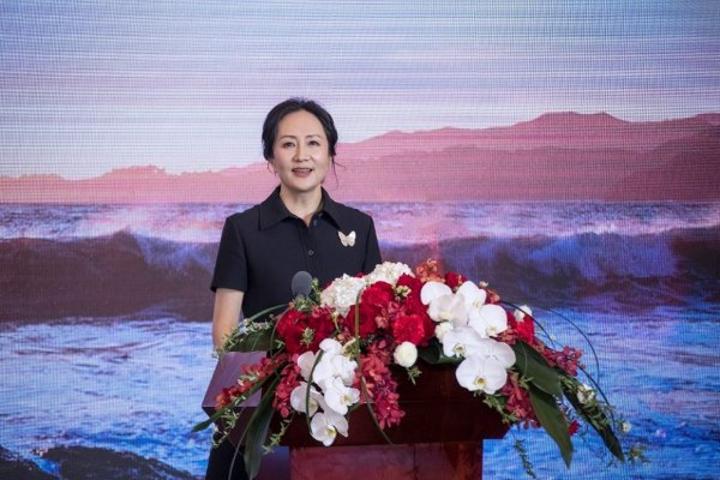Africa-Press – Ghana. Huawei has achieved CNY 636.8billion (99.88billion dollars) in revenue in 2021 and CNY 113.7billion (17. 84billion dollars) in net profit, an increase of 75.9 per cent year-on-year, the 2021 Annual Report has revealed.
The company’s Research and Development (R&D) expenditure reached CNY142.7 billion (22.5 billion dollars) in 2021, representing 22.4 per cent of its total revenue, and bringing its total R&D expenditure over the past 10 years to over CNY 845billion (133.2billion dollars). Mr Guo Ping, Huawei’s Rotating Chairman, in a statement, said moving forward, the company had plans to continuously increase investment in R&D.
He said “Overall, our performance was in line with forecast. Our carrier business remained stable, their enterprise business experienced steady growth, and their consumer business quickly expanded into new domains. In addition, we embarked on a fast track of ecosystem development.”
Madam Meng Wanzhou, Huawei’s Chief Financial Officer of Huawei said, “Despite a revenue decline in 2021, our ability to make a profit and generate cash flows is increasing, and we are more capable of dealing with uncertainty.” Mr Guo said, “Moving forward, Huawei will advance its journey of digitalisation, intelligent transformation, and low carbon.
He said relying on talent, scientific research, and an innovative spirit, “we will continuously increase investment to reshape our paradigms for fundamental theories, architecture, and software, and build our long-term competitiveness.”
She said thanks to the enhanced profitability of its major businesses, the company’s cash flow from operating activities dramatically increased in 2021, amounting to CNY59.7 billion (9.4billion dollars).
She said its liability ratio also dropped to 57.8 per cent, and its overall financial structure had become more resilient and flexible. In 2021, Huawei’s carrier business generated CNY281.5 billion (44.4billion dollars) in revenue and helped carriers around the world deploy leading 5G networks.
Third-party test results have found that 5G networks built by Huawei for customers in 13 countries, including Switzerland, Germany, Finland, the Netherlands, South Korea, and Saudi Arabia, provided the best user experience.
She said by working with carriers and partners, Huawei had signed more than 3,000 commercial contracts for industrial 5G applications. These kinds of 5G applications are currently seeing large-scale commercial use in sectors like manufacturing, mines, iron & steel plants, ports, and hospitals.
She said thanks to continuing digital transformation trends, Huawei’s enterprise business also grew rapidly, generating CNY102.4 billion (16.15billion) in revenue during 2021. In the past year, Huawei launched 11 scenario-based solutions for key sectors such as government, transportation, finance, energy, and manufacturing.
She said the company also established multiple dedicated teams, including a Coal Mine Team, a Smart Road Team, and a Customs & Port Team, to combine resources in a way that more efficiently serves the needs of its customers.
Over 700 cities and 267 Fortune Global 500 companies have chosen Huawei as their digital transformation partner and Huawei now works with more than 6,000 service and operation partners around the world.
She said Huawei’s consumer business zeroed in on consumer wants and needs, further building out the global ecosystem for a smart, all-connected era, as part of the company’s Seamless AI Life strategy for consumers around the world.
This business generated CNY243.4 billion (38.39billion) in revenue in 2021 and continued to see steady sales growth in smart wearables, smart screens, true wireless stereo (TWS) earbuds, and Huawei Mobile Services (HMS).
In particular, the smart wearable and smart screen segments both saw 30 per cent year-on-year growth. In total, HarmonyOS was used in over 220 million Huawei devices as of 2021, becoming the world’s fastest-growing mobile device operating system.
She said during the past year, Huawei also focused on building out its openEuler, MindSpore, and HarmonyOS ecosystems based on the principles of open collaboration and shared growth.
Over eight million developers are currently using Huawei’s open platforms, open-source software, and development tools to explore new business scenarios and business models.
For More News And Analysis About Ghana Follow Africa-Press







